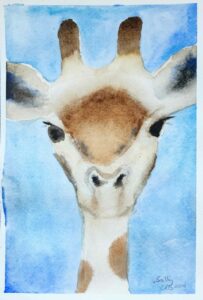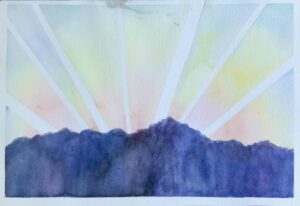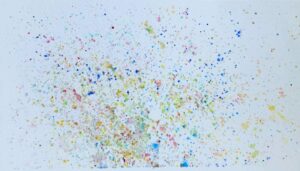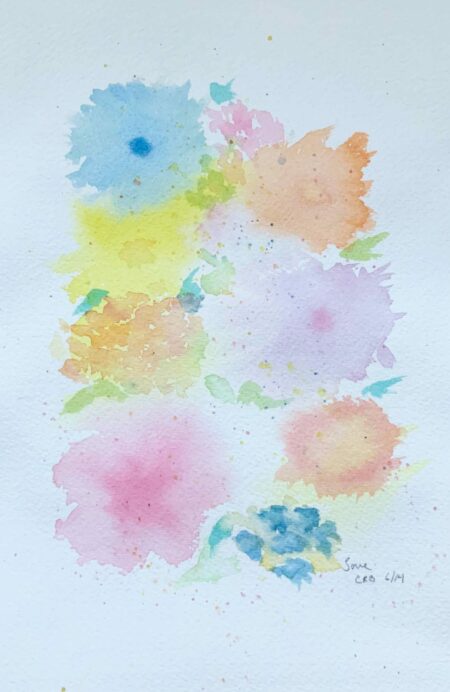Watercolors in Afghanistan
Carolyn, a US Air Force National Guard reserve who was twice deployed to Afghanistan twice, shared with us one of her go-to ways of coping with being in a war zone. Each Sunday, she would go out onto the base with her watercolor set to capture any flowers she could find. Whenever she was painting, people would approach her wanting to admire her sketches.
Art Invites Deeper Conversations
Carolyn also noticed this with her colleagues in the military–with staff with whom she normally wouldn’t have interacted. When they passed by her workspace, they would be drawn to ask her about paintings she had hung around her desk. Even with peers with whom she had regular contact, the art seemed to invite people to have deeper conversations. They would remember their “inner artist” and talk about their relationship with doing art, good or bad.
Art Transforms Isolation and Connects Us
During one of these exchanges, she chatted with a fellow soldier who revealed that he was feeling isolated and disconnected both from himself and his family. Carolyn gave him some watercolor pencils and paper. He came back to her after several months and reported that he’d been using them to make drawings and write stories for his wife and children. It not only transformed his isolation but it gave him a completely new and different way to connect with his kids.

Finding a Career that Combines Her Passion for Art and Her Other Strengths
Carolyn was so impressed with the effect that art had on people that after her last post she went on to pursue a career in the arts and healthcare for people in the military. She didn’t want to be on the frontlines like Rebecca and Gioia, instead she wanted to work on the backend quietly ensuring that resources were available for that work to happen.
Carolyn now serves as a project manager for a program that provides community arts engagement for military members, their families, and caregivers. She sees her most important role as ensuring that the funding and structure are available for military to avail themselves of the healing benefits of the creative process. “When people get deployed with color pencils, I’ve done my job.”
Art Is Still a Go-To Coping Mechanism
Carolyn still uses art for herself as a coping mechanism. For example, she recently had to nurse her sick cat for months. She found embroidering helped quiet her overly busy mind and calm her nerves in a way that nothing else could. She truly believes in art’s capacity to help people find peace.h

Art Not Just to Resolve Trauma But To Celebrate Joy
We close this newsletter with a bit more about the watercolor paintings Carolyn made in Afghanistan. Although she knew that many people needed to use art to express their pain and trauma, she wanted to paint things that made her happy and took her mind off of what she was going through.
This piece on the left shows her experimenting with capturing the beauty of the sunsets she would see on her evening runs. Even though we were never there, we think she nailed it! Thank you, Carolyn, for your service then and now.

Warmly, Rebecca and Gioia
Carolyn’s Art Activity
Pick a small art project that you’ve wanted to do or that you already do, create it, and hang it in a place where others have an opportunity to engage with. Think about why you chose that art project and notice how it impacts people who have an opportunity to interact with it. See if giving yourself permission to make art gives other people permission to do so as well.
